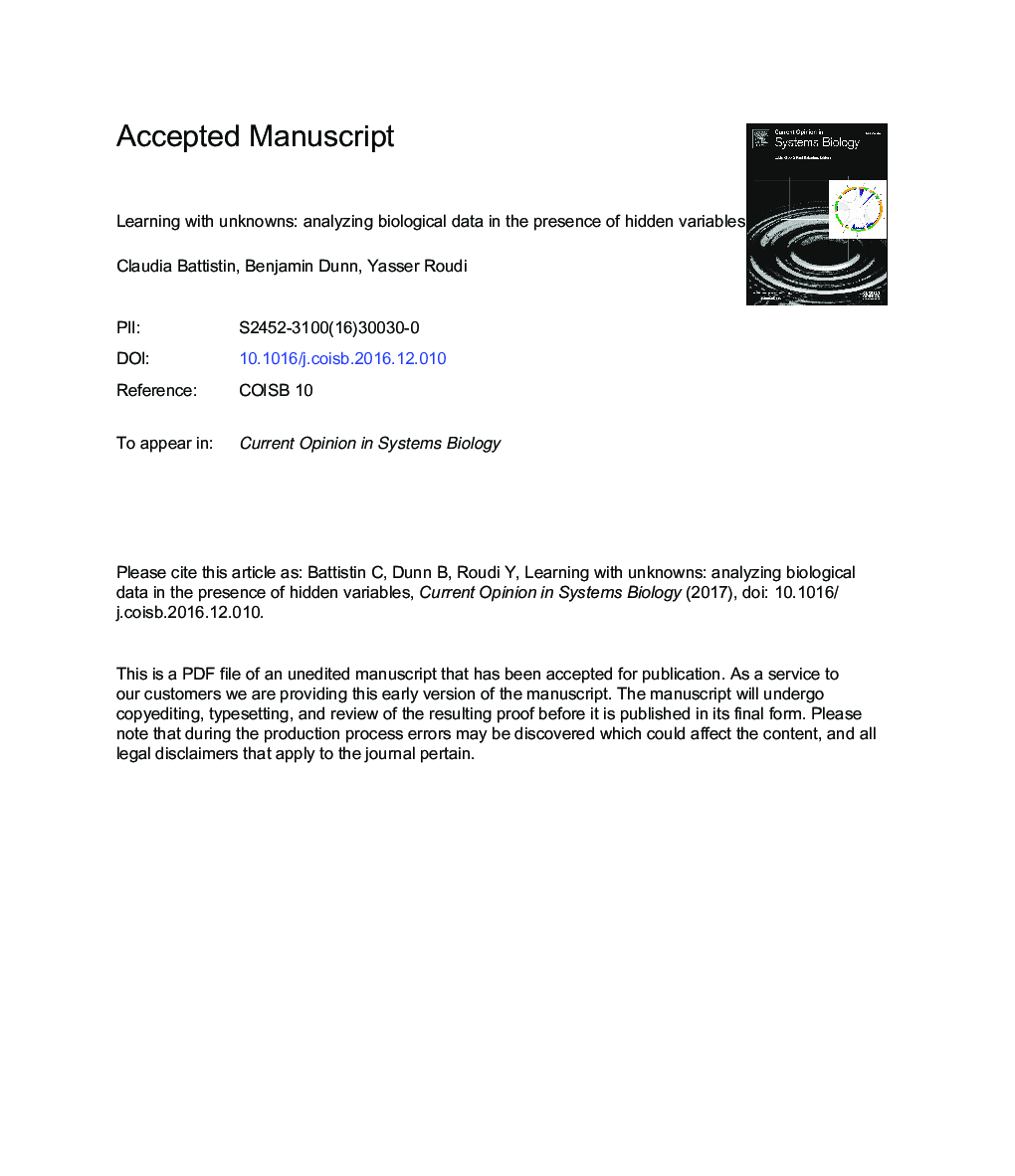| Article ID | Journal | Published Year | Pages | File Type |
|---|---|---|---|---|
| 8918236 | Current Opinion in Systems Biology | 2017 | 22 Pages |
Abstract
Despite our improved ability to probe biological systems at a higher spatio-temporal resolution, the high dimensionality of the biological systems often prevents sufficient sampling of the state space. Even with large scale datasets, such as gene microarrays or multi-neuronal recording techniques, the variables we are recording from are typically only a small subset, if wisely chosen, representing the most relevant degrees of freedom. The remaining variables, or the so called hidden variables, are most likely coupled to the observed ones, and affect their statistics and consequently our inference about the function of the system and the way it performs this function. Two important questions then arise in this context: which variables should we choose to observe and collect data from? and how much can we learn from data in the presence of hidden variables? In this paper we suggest that recent algorithmic developments rooting in the statistical physics of complex systems constitute a promising set of tools to extract relevant features from high-throughput data and a fruitful avenue of research for coming years.
Related Topics
Physical Sciences and Engineering
Computer Science
Computer Science (General)
Authors
Claudia Battistin, Benjamin Dunn, Yasser Roudi,
